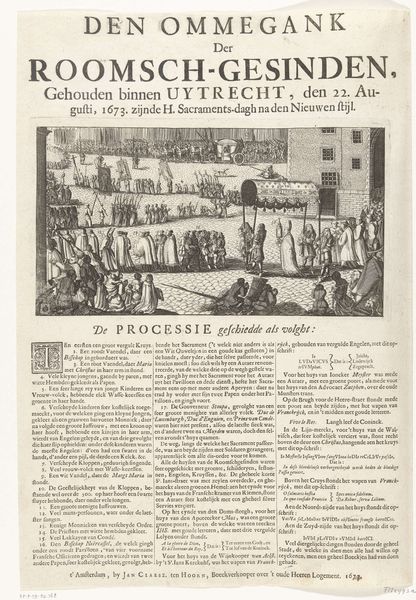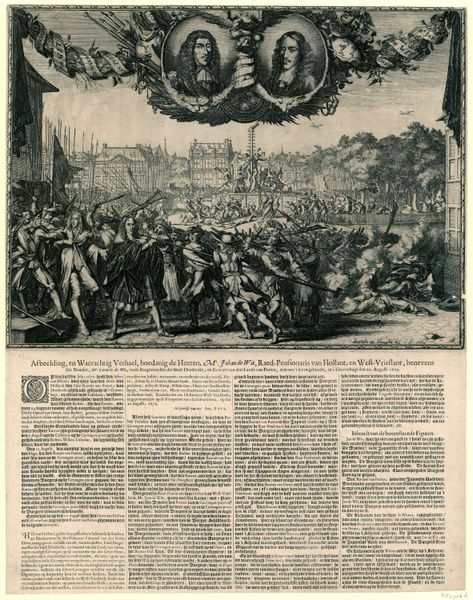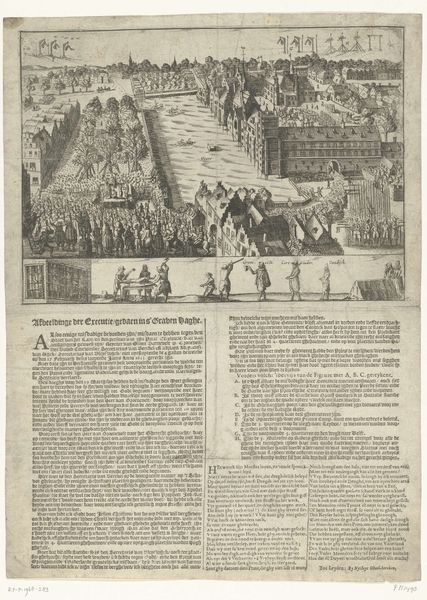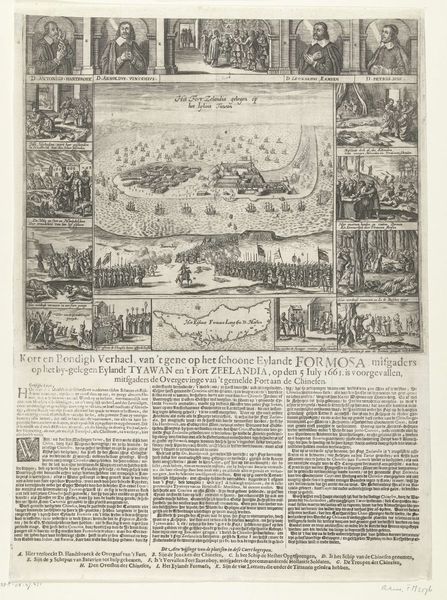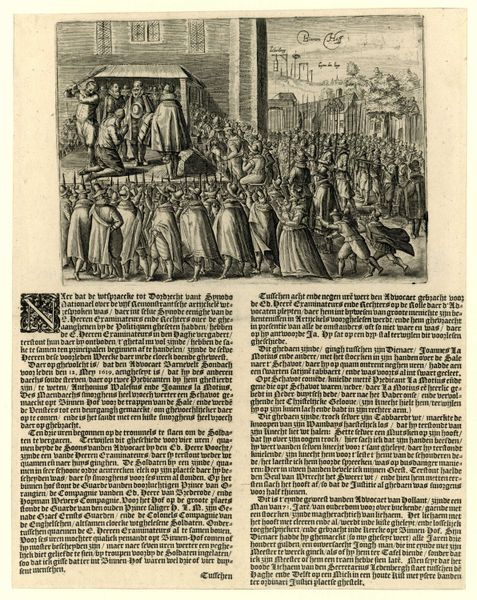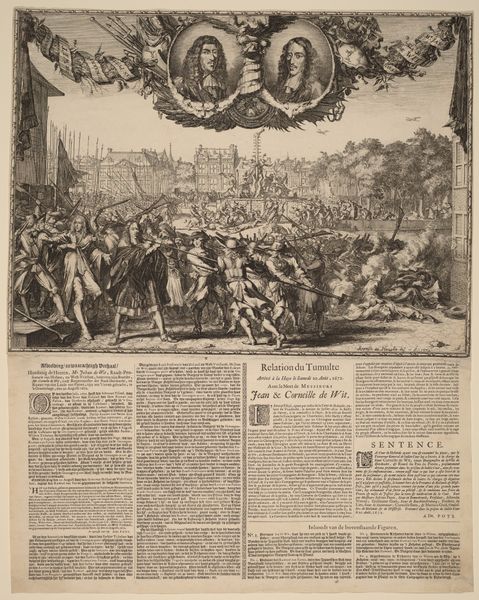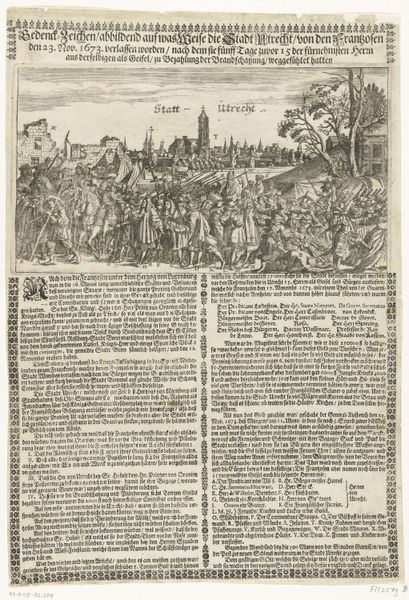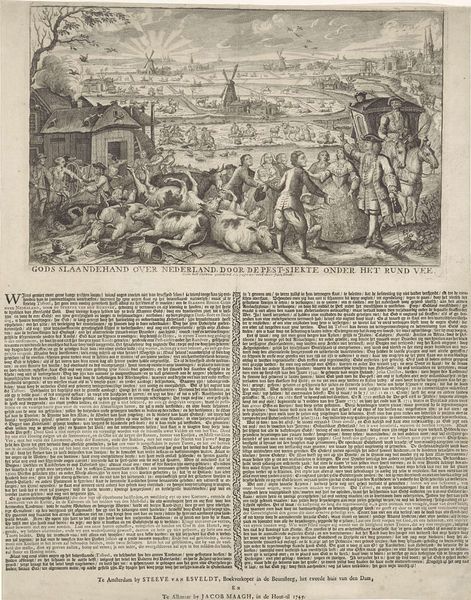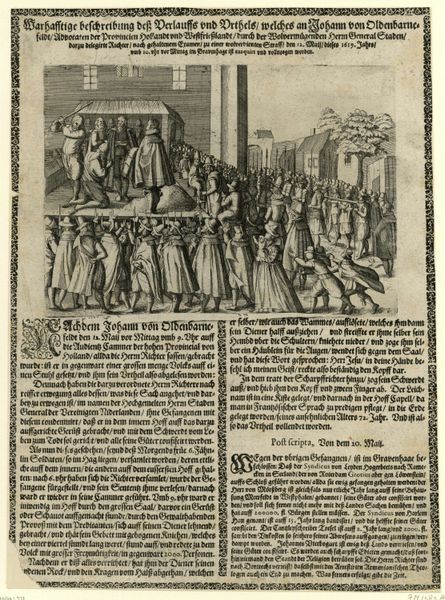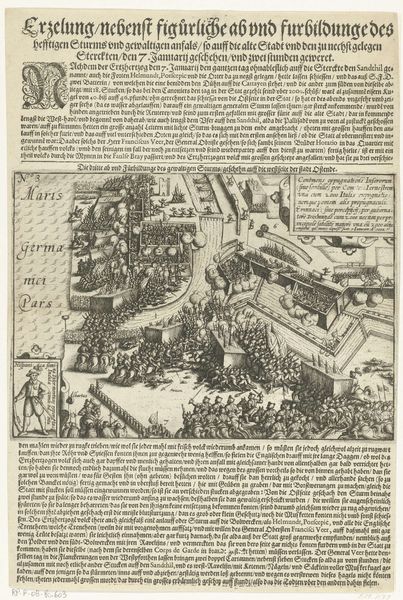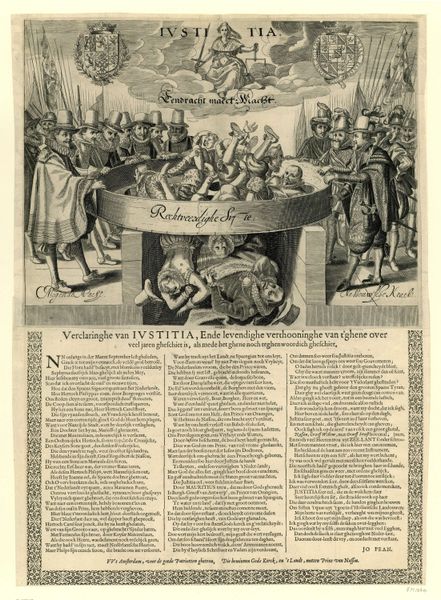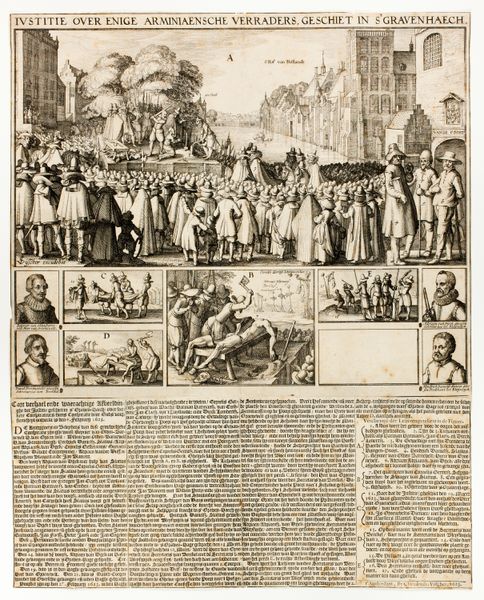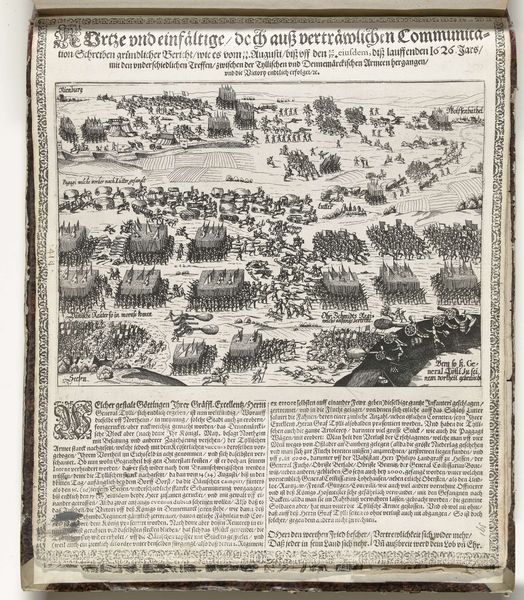
Dood van de gebroeders De Witt en de verminking van hun lichamen, 1672 1672
0:00
0:00
print, engraving
#
narrative-art
#
baroque
# print
#
old engraving style
#
genre-painting
#
history-painting
#
engraving
Dimensions: height 507 mm, width 360 mm
Copyright: Rijks Museum: Open Domain
Curator: This print, made in 1672, depicts the "Death of the De Witt Brothers and the Mutilation of Their Bodies". It’s currently housed here at the Rijksmuseum. Editor: It's stark, almost brutally efficient. The composition is fascinating—the twin portraits flanking this scene of intense public violence. There’s a graphic quality to the entire thing; almost like a political cartoon, but this…this is someone’s real, historical trauma. Curator: Indeed. It's a chilling piece of propaganda, showing the gruesome deaths of Johan and Cornelis de Witt, powerful Dutch statesmen. Notice how the portraits are almost iconic representations, standing guard over the unfolding drama below. The birds evoke ideas about both freedom and, of course, also act as scavengers after carrion. Editor: The public nature of it… the violence being enacted in broad daylight, with crowds witnessing. It feels like a deliberate attempt to showcase power, a stark warning to anyone who might oppose the ruling faction. The choice to represent the story via prints is important. Think about how rapidly accessible and easily disseminated it was at a key moment in the development of visual news media. Curator: Absolutely, and the use of allegory further complicates it. Consider the various symbolic actions—the removal of organs, the dragging of bodies… each gesture carries a heavy, symbolic weight. The choice to repeat similar images in printed news across several years underscores the deliberate memorialization of this event through shared, understandable iconographies. Editor: It raises some crucial questions about the artist's intent too. Was this created as a genuine expression of public outrage or as a tool for social control, justifying violence against those perceived as enemies of the state? This wasn’t merely the representation of something seen or witnessed, but instead it seems very intentionally staged for circulation and a political effect. Curator: A good question. Perhaps the printmaker felt a kind of political pressure to amplify an event deemed important by the rulers, while they carefully constructed its message with certain tropes and recognizable pictorial features of contemporary prints to shape and mobilize local feelings about it. Editor: Looking at the text printed alongside the image further highlights how carefully everything was calculated, including the image. But seeing the print still feels incredibly potent. It makes you wonder about how similar events play out across different media today. It’s a potent reminder of what violence is able to accomplish, even beyond its original context.
Comments
No comments
Be the first to comment and join the conversation on the ultimate creative platform.
